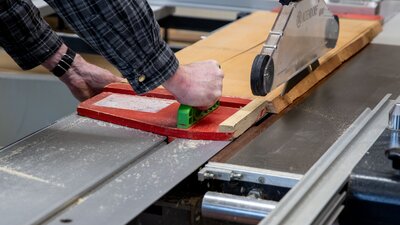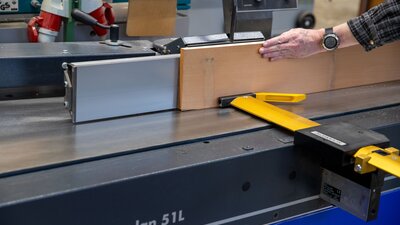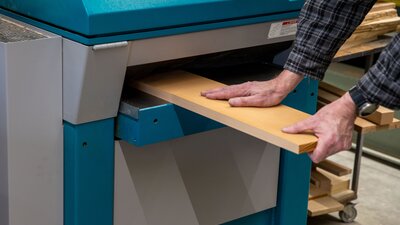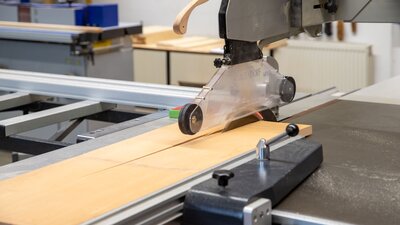
Wood preparation
To prepare wooden workpieces for surface processing, several upstream procedures may be required.
What happens before the surface treatment?
In order to meet the industrial requirements for wood surfaces in the best possible way, an analysis of the initial condition is required first.
During wood preparation and production of the workpieces, upstream processing steps are decisive for the subsequent finish and surface result.
The following steps outline the fabrication of a wooden plank before it can be used as a workpiece.
Trimming

Trimming involves cutting off the edge of the tree using a saw cut. The purpose of the cut is to remove the bark and the directly adjacent cambium layer from the sawn timber.
Dressing

The wood product, e.g. plank, cannot be processed after the edging cut. On the one hand, the surface structure is rough. On the other hand, the still warped surfaces must be leveled. In this step, an angularity is additionaly created between the individual sides.
Planing

The planing process is required to achieve a defined thickness/height. An already flat wood surface is placed on the planing table and the opposite surface is then processed in one or more planing processes.
Cutting to size

Once the desired thickness or height is achieved, the product can be cut to the final length and width dimensions. The sawn timber is now prepared for brushing processes such as structuring.